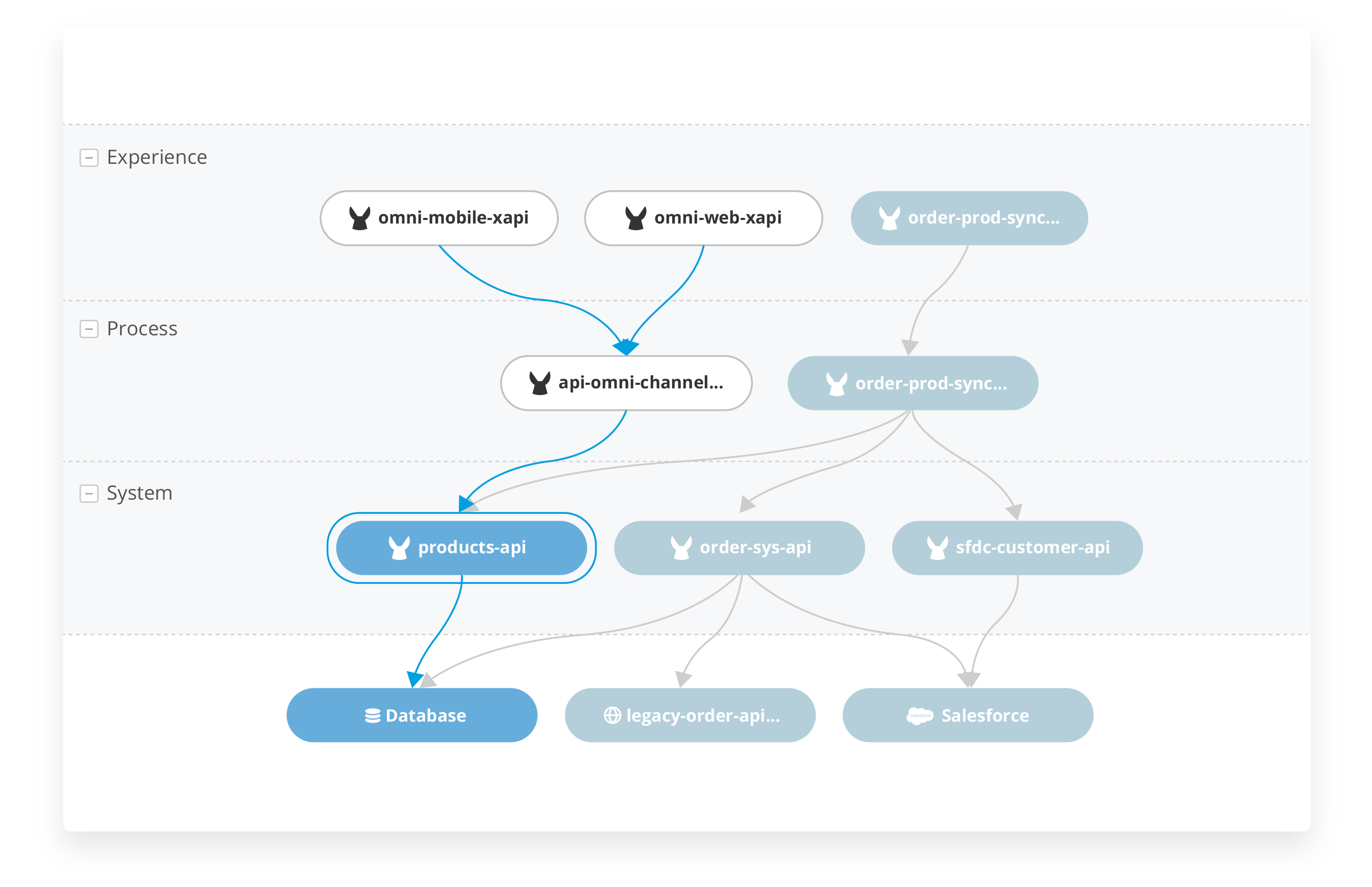Mulesoft Brings Visibility, Machine Learning to Anypoint’s ‘Application Network’ Approach to APIs, Integration
MuleSoft is updating its Anypoint Platform’s ‘application network’ with new features that will let technical and non-technical users better design and visualize how APIs impact performance and customer experience of connected apps, data and devices. IDN speaks with Mulesoft’s David Chao.
by Vance McCarthy
Tags: Anypoint, API, Integration, Mulesoft,

head of product marketing

"Modern digital customer experiences . . .come from bringing multiple technologies together to create truly connected -- but also consistent -- customer experiences."
 Integration Powers Digital Transformation for APIs, Apps, Data & Cloud
Integration Powers Digital Transformation for APIs, Apps, Data & CloudMuleSoft is adding features to its Anypoint Platform to allow both technical and non-technical users better visualize and understand how APIs (and related integrations to services and microservices) impact performance and effectiveness of connected apps, data and devices.
In specific, the latest Mulesoft update adds machine learning, real-time insights, visualizations and granular security features. All these features enhance Mulesoft’s “application network” approach rolled out early this year.
Anypoint Platform’s vision for an “application network’ comes as the skyrocketing use of APIs in enterprises can lead to a growing sprawl of API-powered point-to-point connections. The Mulesoft ‘application network’ approach in the company’s Anypoint Platform aims to bring deeper visibility and more granular control to API use, Mulesoft’s head of product marketing David Chao told IDN.
“To drive the modern digital customer experiences requires more than the implementation of any single technology. Rather, it comes from bringing multiple technologies together to create truly connected -- but also consistent -- customer experiences,” Chao said.
“This release really takes our vision for the ‘application network’ one step further by unlocking the insights within that application network through what we call the application network graph,” Chao said.
Chao explained the ‘application network graph’ this way:
“The same way that we can think of a social network graph and the interactions and connections between different friends and different colleagues, we can apply that concept to the ‘application network graph’ so we can better understand how applications are connected –and how all that supports different applications and Integrations,” Chao told IDN.
He went on to explain how the ‘application network graph’ delivers benefits to companies pursuing various digital transformation projects.
Organizations are being required to connect an ever-increasing number of applications, data and devices to deliver digital transformation and create innovative new customer apps and experiences, Chao noted. By building an application network, companies can gain “instant fine-grained visibility into information across the application network through its graph [and] gain deeper insights that are otherwise incredibly difficult to obtain,” he added.
To deliver this visibility and control, Mulesoft designed the ‘application network graph’ to display and contextualizes myriad metadata. Such data includes a rich set of the inner workings of APIs and connections, as well as components and operational characteristics, Chao added.
As a result, development teams, IT and business users can all access deep information in the context they best understand about the workings of their APIs and integration-driven applications and systems.
“With the application network graph, I think we're able to have more visibility and transparency to better helps us with problem resolution. That helps us with dependency analysis so that we can increase operational efficiency and effectiveness, as well as decrease the mean time for resolution,” Chao told IDN.

In this context, Chao explained how Mulesoft’s Anypoint Platform application network and application network graph provides a number of benefits across developer, IT and business stakeholders.
First, by making different applications pluggable and reusable, it allows users to “quickly iterate and then build out various customer experiences in a way that is reflective of changing customer preferences,” Chao said.
Beyond that, Chao added, “the application network graph specifically allows users to really understand how data is flowing between different nodes or on the application network.” In this way, the Anypoint Visualizer supports architects as well as folks that may be owning the management and uptime of these integration applications. It also helps business stakeholders visualize and ensure the customer experiences they had in mind are performant, robust and secure, he added.
It’s important to note here that under the covers, Mulesoft’s application network graph is embedded in three major components of the Anypoint platform – Anypoint Design Center, Anypoint Visualizer and Anypoint Monitoring.
“Having that capability through Anypoint Visualizer and having it incorporated with Anypoint Monitoring has really helped our customers better realize and move more quickly towards realizing that vision of the application network.”
Adding to the power of the application network, MuleSoft also added an array of machine learning and smart policies enable users to set and trigger autonomous actions or allow users to overrule presets and set new controls based on insights.
Among the notable Anypoint Platform updates for its ‘application network’ and new ‘application network graph’ are
Automatic holistic view of APIs and integrations:
Anypoint Visualizer automatically builds a holistic view of an organization’s APIs and integrations. To do so, it uses information the application network graph.
Further, Visualizer can use data Anypoint Monitoring. This provides the ability to troubleshoot issues quickly. “By segmenting the view by average response time, errors and throughput, users can understand where issues may emerge before they happen and pinpoint the root cause when they do arise,” Chao said.
Machine learning for data mapping to accelerate development:
Anypoint Design Center’s flow designer applies machine learning to the mappings from the application network graph. Using knowledge from the application network graph, automatically provides recommendations for data mapping and suggests ways to supply required data transformations. This information is also presented to users, allowing them to accept or tailor the recommendations to fit their organization’s specific business processes.
Expanded suite of API management policies:
MuleSoft is also introducing new API policies into the application network graph that provide additional layers of security and control. These policies can be easily applied with clicks, not code, helping users increase their security posture to prevent breaches, such as DoS attacks.
As an application network expands, so does the number of users, traffic and access points. This can also increase the vulnerability of the network, Chao noted. “That is why it is important to apply security at every layer, embedding security into API designs, tokenizing data at rest and in transit, and applying policies on individual APIs and at the edge.”
Bringing Order to API Chaos – Without Constraining Innovation
In addition to these features, Anypoint Platform’s application networks also help with management and runtime of new-gen architectures, including microservices, Chao said.
“With Anypoint Runtime Fabric, released in May, we help companies think about microservices in the sense that you're able to use Runtime Fabric to deploy services across different environments – AWS, Azure, VMs [virtual machines] and even bare metal. Underneath Runtime Fabric is a set of containerization technology, so [it] is built on top of Docker and orchestrated by kubernetes.”
Bringing a mountain dispersed set of APIs and integration together in one platform may sound appealing to companies coping with API sprawl, it may also sound like an intimidating task – if not an impossible one. On that score, Mulesoft is helping companies on-ramp their integration infrastructures through an application network approach, Chao said,
For a growing number of vertical industries, Mulesoft engineers are working on accelerators and patterns to help companies get quickly started. “We’re coming with codified IP on what those architectures might look like, what API designs and implementations might look like that really reflects how we think about building an application network,” Chao said.
Analyst, Customer Reaction to Mulesoft’s Latest Anypoint Platform Updates
Mulesoft’s approach to blend its ‘application network’ platform technology, alongside insights and reference implementation is attracting attention.
Among analysts, Maureen Fleming, program vice president, Integration and Process Automation research, IDC, noted the importance of deeper visibility into data, as well as API and integration connectivity.
“Very few companies are getting all the value from their data as they should be, as it is locked up in various applications and systems that aren’t designed to talk to each other. Companies who are truly digitally capable will be able to connect these disparate data sources, pull critical business-level data from these connections, and make informed business decisions in a way that delivers competitive advantage.,” she said.
Among enterprise users of APIs execs at travel app, Saber Solutions, are already working on their own ‘application network’ with Mulesoft to help increase revenues to airlines as well as accelerate the delivery of new consumer apps that can offer end-to-end personalization. Anypoint’s application network graph will let Saber “gain new levels of visibility across our application network, allowing us to further scale, speed development [and] increase operational efficiency,” said Saber CTO Vish Saoji, in a statement.
Earlier this year, MuleSoft debuted the Anypoint Platform’s vision for an “application network,” noting that even as APIs were skyrocketing in popularly, they often would lead to a growing sprawl of API-powered point-to-point connections. An ‘application network’ approach, Mulesoft suggested, could bring APIs better ease-of-use, deeper visibility and more granular control.
Combined, these benefits would let designers, developers and IT more precisely throttle API connections to meet the needs of business, operations and security staff.
Related:
- Tray Advantage Program To Speed, Simplify AI-Powered Automation for Enterprises
- Removing Barriers to Business by Enabling Agility & Control with Ecosystem Integration
- 98% of Enterprises Struggle To Maintain, Rebuild Integrations for Key Business Apps
- ThreatX Adds API Visibility, Protection Capabilities To Defend Against Real-Time Attacks
- Visibility and Transparency are Climbing the List of C-Suite Priorities in 2022
All rights reserved © 2025 Enterprise Integration News, Inc.


